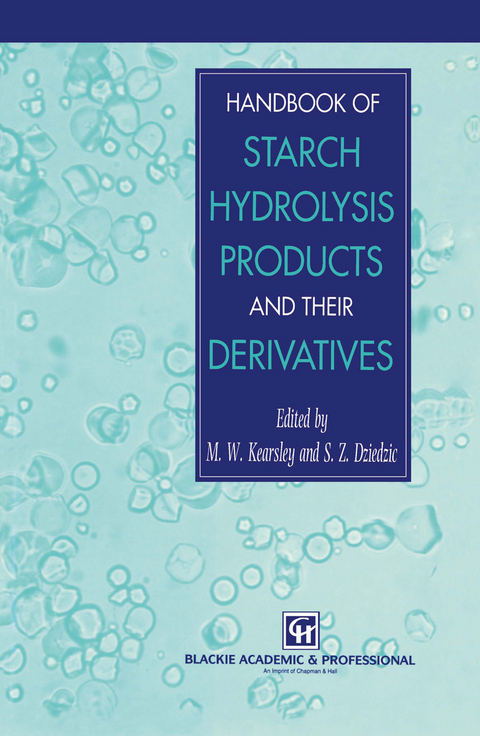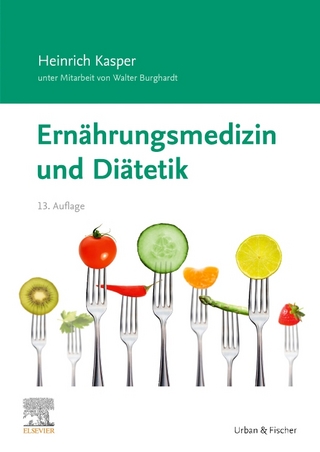
Handbook of Starch Hydrolysis Products and their Derivatives
Springer-Verlag New York Inc.
978-1-4613-5902-9 (ISBN)
1 The technology of starch production.- 1.1 Introduction.- 1.2 Glucose syrups.- 1.3 Starch.- 1.4 Industrial starch recovery.- 1.5 Conclusion.- 2 Enzymatic production of glucose syrups.- 2.1 Introduction.- 2.2 Enzymes for starch modification.- 2.3 Processing and enzymology.- 2.4 The future.- 2.5 Conclusions.- Acknowledgements.- References.- 3 Maltodextrins.- 3.1 Introduction.- 3.2 Maltodextrin production.- 3.3 Properties of maltodextrins.- 3.4 Analysis of maltodextrins.- 3.5 Applications of maltodextrins in food and related areas.- 3.6 Maltodextrin fat replacers.- 3.7 Specific examples of maltodextrin food applications.- 3.8 Cyclodextrins.- 3.9 Conclusions.- References.- 4 Analysis of glucose syrups.- 4.1 Introduction.- 4.2 Traditional physical and chemical analyses.- 4.3 Determinations using chromatographic methods.- References.- 5 Physical and chemical properties of glucose syrups.- 5.1 Introduction.- 5.2 Dextrose equivalent (DE).- 5.3 Degree of polymerisation (DP).- 5.4 Characterisation of glucose syrups.- 5.5 Baumé.- 5.6 Bodying agent.- 5.7 Brix (degrees Brix).- 5.8 Boiling point elevation and freezing point depression.- 5.9 Carbohydrate composition.- 5.10 Colour formation.- 5.11 Fermentability.- 5.12 Foam development and stabilization.- 5.13 Glaze formation.- 5.14 Humectancy.- 5.15 Hygroscopicity.- 5.16 Molecular weight and DE.- 5.17 Nutritive solids.- 5.18 Osmotic pressure and water activity.- 5.19 Prevention of crystallisation.- 5.20 Refractive index.- 5.21 Solubility.- 5.22 Specific heat.- 5.23 Specific rotation.- 5.24 Sweetness.- 5.25 Viscosity.- 5.26 Conclusions.- References.- 6 Polyols from starch.- 6.1 Introduction — What are polyols?.- 6.2 Polyols and their legal status.- 6.3 General points in the method of manufacture.- 6.4 Physical and chemicalproperties of polyols.- 6.5 Organoleptic properties of polyols.- 6.6 Nutritional aspects of polyols.- 6.7 Applications of polyols.- 6.8 Conclusion.- References.- 7 Physiology, metabolism and tolerance of digestible and low-digestible carbohydrates.- 7.1 Introduction.- 7.2 Carbohydrate digestion.- 7.3 Low digestible carbohydrates.- 7.4 Intestinal fermentation and tolerance.- 7.5 Use of low digestible carbohydrates in confectionery products.- Acknowledgements.- References.- 8 Glucose syrups in the fermentation industries.- 8.1 Introduction.- 8.2 Production of food ingredients and additives.- 8.3 Use of syrups in brewing.- 8.4 Summary.- References.- 9 Use of glucose syrups in the food industry.- 9.1 Introduction.- 9.2 Properties of glucose syrups.- 9.3 Confectionery.- 9.4 Dextrose monohydrate in sugar confectionery.- 9.5 Dextrose applications in sugar confectionery.- 9.6 Preserves.- 9.7 Ice cream and frozen desserts.- 9.8 Bakery products.- 9.9 Glucose syrup in savoury sauces, tomato sauces and salad dressings.- 9.10 Coffee whiteners.- 9.11 Dried glucose syrup or maltodextrins (dried starch hydrolysates).- 9.12 Conclusions.
| Zusatzinfo | XV, 275 p. |
|---|---|
| Verlagsort | New York, NY |
| Sprache | englisch |
| Maße | 155 x 235 mm |
| Themenwelt | Medizin / Pharmazie ► Gesundheitsfachberufe ► Diätassistenz / Ernährungsberatung |
| Naturwissenschaften ► Biologie ► Biochemie | |
| Technik ► Lebensmitteltechnologie | |
| ISBN-10 | 1-4613-5902-3 / 1461359023 |
| ISBN-13 | 978-1-4613-5902-9 / 9781461359029 |
| Zustand | Neuware |
| Haben Sie eine Frage zum Produkt? |
aus dem Bereich


